This article was medically reviewed by Troy A. Miles, MD. Dr. Miles is an Orthopedic Surgeon specializing in Adult Joint Reconstruction in California. He received his MD from the Albert Einstein College of Medicine in 2010, followed by a residency at the Oregon Health & Science University and fellowship at the University of California, Davis. He is a Diplomat of the American Board of Orthopaedic Surgery and is a member of the American Association of Hip and Knee Surgeons, American Orthopaedic Association, American Association of Orthopaedic Surgery, and the North Pacific Orthopaedic Society.
There are 9 references cited in this article, which can be found at the bottom of the page.
wikiHow marks an article as reader-approved once it receives enough positive feedback. In this case, 80% of readers who voted found the article helpful, earning it our reader-approved status.
This article has been viewed 389,445 times.
An infection in the toe can range from the relatively mild infection of an ingrown toenail or toenail fungus, to more serious infections of the skin (abscesses or cellulitis). A toe infection could even become very serious and lead to an infection of the joints or bone. While superficial infections are usually relatively mild and can be easily treated at home, a serious infection needs medical treatment. You should learn how to distinguish the two, as a serious infection needs to be evaluated by a physician to ensure that it does not become more serious or spread.
Things You Should Know
- Soak the toe in equal parts warm water and antibacterial soap for 15 minutes once a day. You can also soak the toe in apple cider vinegar.
- Apply tea tree oil directly to the affected area to help clear up a minor infection.
- See a doctor for prescription medication to clear up a serious infection. They may give you oral or topical medication depending on the underlying cause.
Steps
Assessing Your Toe Infection
-
1Assess your symptoms. Sometimes it can be hard to tell what kind of infection you have in your toe and if it is serious or not. It could be a simple ingrown toenail or a more serious infection that could spread into the rest of your body. In order to tell the difference you should assess your symptoms.
- The signs and symptoms of a light infection include: pain and/or tenderness, swelling, redness, and increased warmth in the area.[1]
- The signs and symptoms of a more serious infection include: the formation of pus, red streaks extending from the initial wound, fever.
-
2Seek medical help if you have the symptoms of a serious infection. Once again, these symptoms include pus, red streaks radiating from the wound, or a fever. If you experience any of these, call your physician for advice right away.[2]
- A serious infection can move from your toe into the rest of your body. A really bad infection can even put your system into shock and threaten your life. Because of the seriousness of this, it is important to get a bad infection looked at by a health professional as soon as possible.
Advertisement -
3Decide whether a superficial toe infection can be treated at home. If you don't have any of the serious symptoms, but you are in a bit of discomfort, you may be able to treat the infection at home. Like other types of minor injuries, it might be possible to treat the infection by cleaning the area, applying an antibiotic, and keeping the area bandaged for a few days If this seems like the case, then go ahead with treating the issue this way.
- If you have cleaned the area thoroughly, applied a good antibiotic, and kept the area bandaged and clean, and it is still hurting or getting more painful or inflamed, then it is time to get it looked at by a medical professional.
- If the infection is mild and doesn't seem like a serious risk to your health, you can still make an appointment to get it looked at. Use your own judgement and remember that it's always better to be safe than sorry.
Seeking Medical Treatment
-
1Follow your doctor's suggestions for treatment of a minor infection. This treatment will vary, depending on what is causing the infection. He or she may prescribe oral or topical antibiotics, however, many times a doctor will simply suggest soaking the toe in a solution of ½ warm water and ½ liquid antibacterial soap for about 15 minutes three to four times every day and keeping the area clean.[3]
- Soaking helps with the infection and softens the skin to allow the infection to “come to a head."
- In the case of toenail fungal infections, your doctor may prescribe an oral anti-fungal medication or an anti-fungal prescription nail polish.[4]
-
2Get medical treatment for a serious infection. If the infection is deep and serious, a physician may suggest treating it with a small surgical procedure.[5] This means a quick surgical drainage of an infection, usually used in the case of an abscess.
- The physician may first numb the toe with lidocaine and then open the infection with a scalpel and allow the pus to drain. Then, depending on how deep the infection is, a wicking material may be placed in the wound to allow for more drainage.
- The wound is then packed with gauze for 24 to 48 hours. The packing can be removed after this time and the wound is then examined and re-bandaged.[6]
- Oral antibiotics may be given as well.
-
3Use medicine to treat a superficial infection. Surface (superficial) infections of the toe can be treated in a number of ways. These include:
- Soaking: Just as with a more serious infection, soaking toe in a solution of ½ warm water and ½ a liquid antibacterial soap is usually recommended. You should soak for about 15 minutes once a day.
- OTC (over-the-counter) antibiotic creams and ointments for bacterial infections: These include Polysporin, Neosporin, Bacitracin or a Triple Antibiotic ointment.
- OTC (over-the-counter) anti-fungal creams for fungal infections: These include Lotrimin, Derman, Canesten, or another anti-fungal medicine.
Using Home Remedies
-
1
-
2Soak the toe in apple cider vinegar. You should do this for 15 minutes every day. The apple cider vinegar can be warm or cold. Use whatever temperature is most comfortable for you.[9]
- Apple cider vinegar has documented antimicrobial properties, likely at least in part due to its acidic nature. Vinegar in general has been used for hundreds of years for its anti-infection properties.[10]
-
3Apply a garlic paste on the infection. Crush two to three cloves of peeled garlic and mix with either olive oil, castor oil, or manuka honey, which also has anti-microbial properties.[11] Put onto the infection and cover with a bandage.[12]
- Change the garlic daily.
- Garlic has natural antibiotic properties that make it helpful for fighting skin infections, such as staph.[13]
-
4Soak the toe in Epsom salts daily. Add about ½ cup of Epsom salts to three cups of warm water. Let your toe soak in the solution for 15 minutes, or until the water gets too cold.
- The high salt content can kill bacteria and fungal infections.
-
5Dilute Listerine mouthwash in warm water and soak the toe. Take equal parts Listerine and warm water and soak the toe daily. Listerine can help a simple infection because it contains menthol, thymol, and eucalyptol, which are all derived from various natural antibiotic sources.
- If you have a toenail fungus infection, a soak of 50/50 Listerine and white vinegar can help eliminate the infection.
-
6See your doctor if home remedies do not help. If your infection does not improve within a few days of using home remedies or if it seems to be getting worse, then you will need to see a doctor for treatment. Do not continue using these treatments if they are not working.
References
- ↑ http://www.webmd.com/first-aid/inflammation-or-infection-of-a-toe-foot-or-ankle
- ↑ http://www.webmd.com/first-aid/inflammation-or-infection-of-a-toe-foot-or-ankle
- ↑ http://www.emedicinehealth.com/paronychia_nail_infection/page3_em.htm#are_there_home_remedies_for_a_paronychia_nail_infection
- ↑ http://www.mayoclinic.org/diseases-conditions/nail-fungus/basics/treatment/con-20019319
- ↑ http://www.mayoclinic.org/diseases-conditions/nail-fungus/basics/treatment/con-20019319
- ↑ http://www.emedicinehealth.com/paronychia_nail_infection/page3_em.htm#are_there_home_remedies_for_a_paronychia_nail_infection
- ↑ http://onlinelibrary.wiley.com/doi/10.1046/j.1440-0960.2002.00590.x/abstract?userIsAuthenticated=false&deniedAccessCustomisedMessage=
- ↑ http://onlinelibrary.wiley.com/doi/10.1046/j.1440-0960.2002.00590.x/abstract?userIsAuthenticated=false&deniedAccessCustomisedMessage=
- ↑ Medina, Eduardo, et al. "Antimicrobial activity of olive oil, vinegar, and various beverages against foodborne pathogens." Journal of Food Protection® 70.5 (2007): 1194-1199.
- ↑ http://www.ncbi.nlm.nih.gov/pmc/articles/PMC1785201/
- ↑ Jenkins, Rowena, Aled Roberts, and Helen Louise Brown. "On the antibacterial effects of manuka honey: mechanistic insights." Research and Reports in Biology 6 (2015): 215-224.
- ↑ Gupta, Shivani, Suman Kapur, and Apoorva Verma. "Garlic: An Effective Functional Food to Combat the Growing Antimicrobial Resistance." Pertanika Journal of Tropical Agricultural Science 38.2 (2015).
- ↑ http://www.staph-infection-resources.com/treatment/alternative/garlic/
About This Article
If your toe has a superficial or minor infection, with symptoms like pain, swelling, and redness, soak it in a solution of equal parts warm water and antibacterial soap for 15 minutes a day. Alternatively, soak your toe in apple cider vinegar, which has antimicrobial properties to help fight your infection. You can also apply a few drops of tea tree oil to your toe to help kill the bacteria. If your infection doesn’t improve within a few days of using home remedies or gets worse, visit your doctor for treatment. You should also see your doctor if you notice symptoms like pus, red streaks surrounding the wound, or fever at any time. For more tips from our Medical co-author, including how to soak your toe in a Listerine solution to fight an infection, read on!

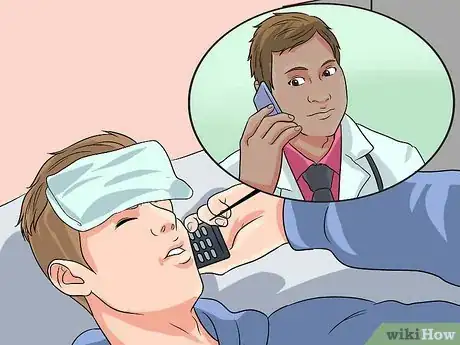

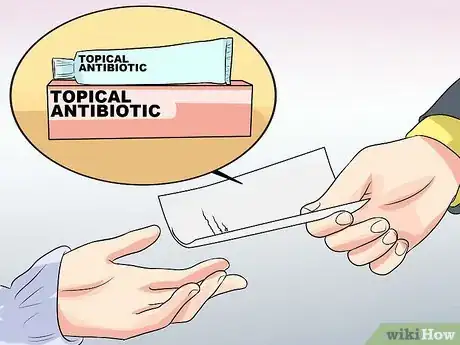

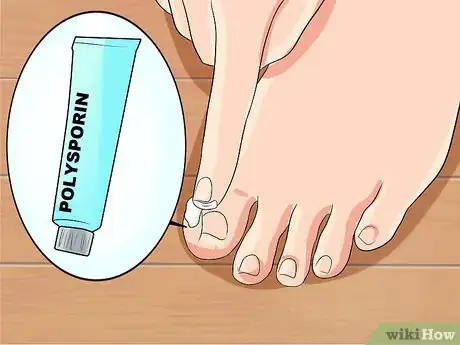

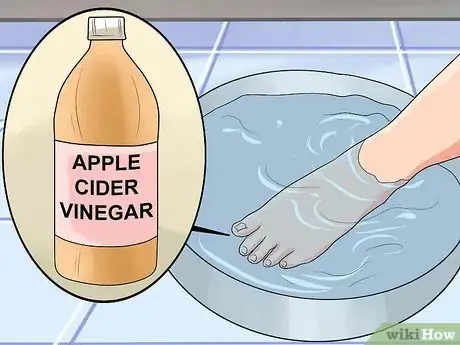

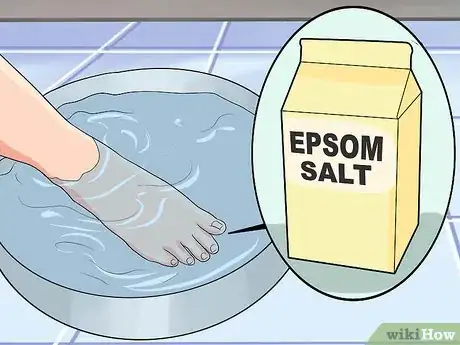
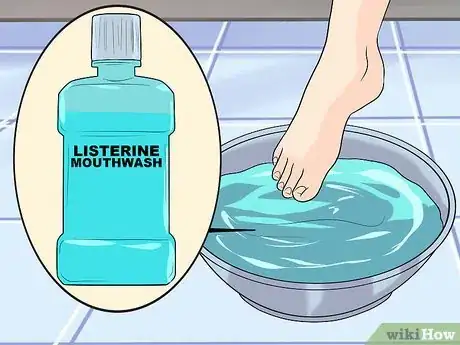
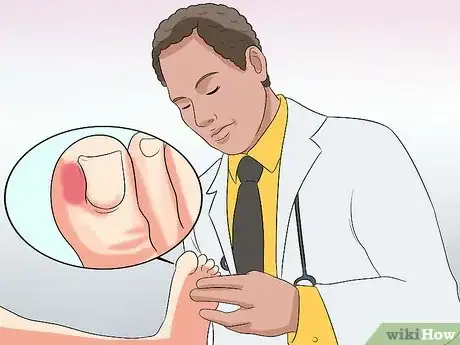
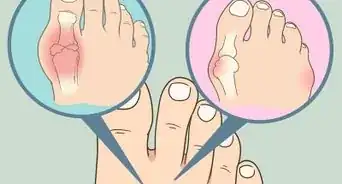







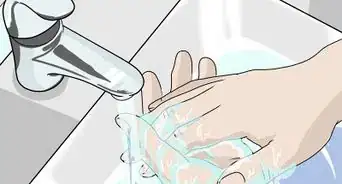





















































Medical Disclaimer
The content of this article is not intended to be a substitute for professional medical advice, examination, diagnosis, or treatment. You should always contact your doctor or other qualified healthcare professional before starting, changing, or stopping any kind of health treatment.
Read More...